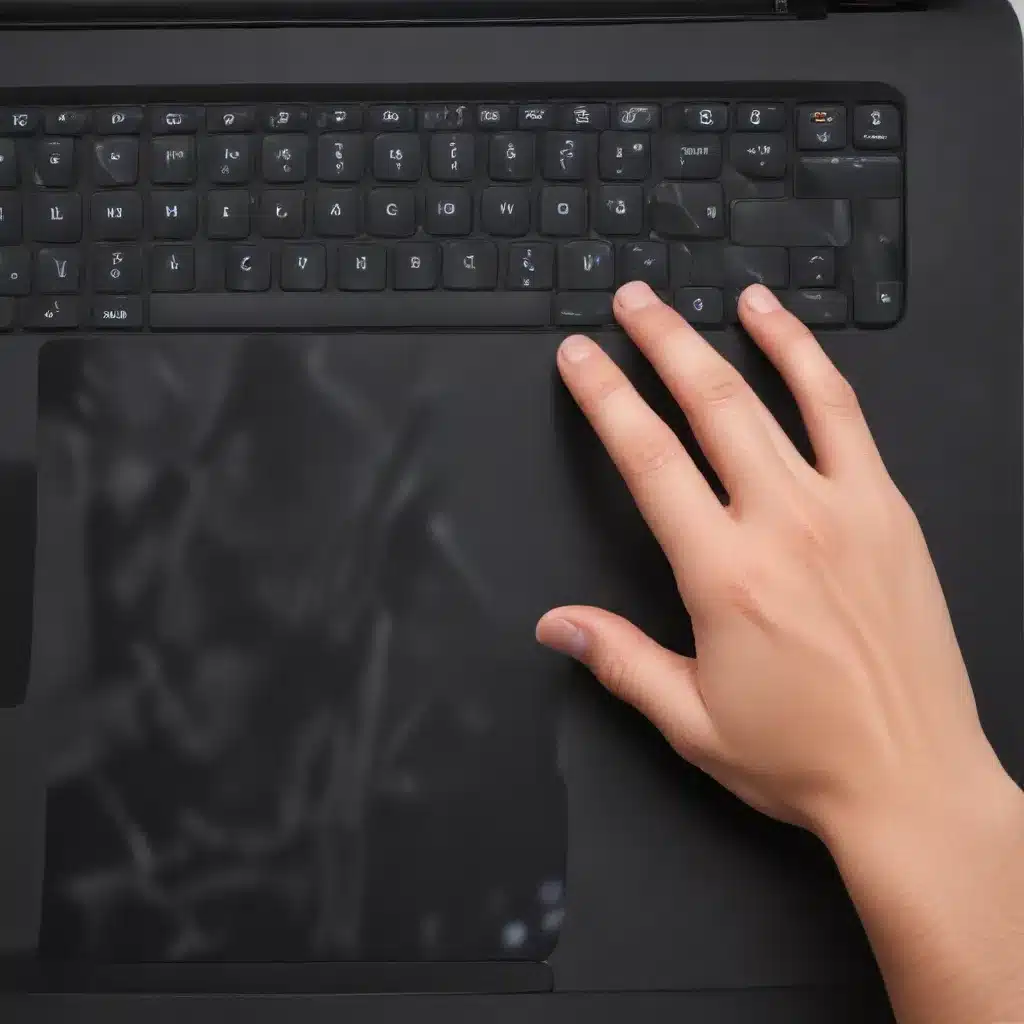As an experienced IT professional, I’ve seen my fair share of touchpad-related issues over the years. From erratic cursor movements to complete touchpad failures, these pesky problems can be a real thorn in the side of any computer user. But fear not, my fellow tech enthusiasts – I’m here to walk you through a comprehensive guide to identifying, diagnosing, and resolving those pesky touchpad troubles.
Hardware Troubleshooting
Let’s start by taking a closer look at the hardware side of things. The touchpad, also known as a trackpad, is a vital input device that allows you to navigate your computer without the need for a traditional mouse. However, like any piece of hardware, it can be susceptible to a variety of issues.
Input Devices
Touchpads
Touchpads are the primary input method for many laptops and 2-in-1 devices. They use capacitive sensing technology to detect the movement and tapping of your fingers, providing a smooth and intuitive way to control your computer.
Mice
While touchpads are the go-to for many users, some prefer the precision and control of a good old-fashioned mouse. USB and wireless mice can be a reliable alternative, especially when troubleshooting touchpad problems.
Troubleshooting
Device Drivers
One of the most common causes of touchpad issues is outdated or corrupted device drivers. These drivers are the software that allows your operating system to communicate with the touchpad hardware. If they’re not up to date, you may experience a range of problems, from erratic cursor movements to complete touchpad failure.
Hardware Diagnostics
In some cases, the issue may be hardware-related. This could be due to a physical problem with the touchpad itself, such as a loose connection or a manufacturing defect. To diagnose hardware issues, you may need to run specific tests or even open up your device to inspect the components.
Operating System Troubleshooting
The operating system you’re using can also play a significant role in touchpad performance. Let’s take a closer look at how to troubleshoot touchpad problems in both Windows and macOS.
Windows
Windows Settings
In Windows, you can find the touchpad settings in the Bluetooth & Devices section of the Settings app. Here, you can adjust various touchpad options, such as sensitivity, scrolling, and multi-finger gestures.
Troubleshooting Tools
Windows also provides a variety of built-in troubleshooting tools that can help you identify and resolve touchpad issues. The Hardware and Devices troubleshooter, for example, can be a valuable resource for pinpointing and addressing common problems.
macOS
System Preferences
In macOS, you can manage your touchpad settings through the System Preferences. Here, you’ll find options to adjust tracking speed, scrolling, and various gestures.
Diagnostics
macOS also offers a range of diagnostic tools that can help you identify and troubleshoot touchpad problems. The Apple Diagnostics utility, for instance, can scan your system for hardware-related issues.
Connectivity Troubleshooting
Connectivity issues can also contribute to touchpad problems, so it’s important to ensure that your device is properly connected to your computer.
Wireless Connectivity
Bluetooth
If your touchpad is wireless, it likely connects to your computer via Bluetooth. Ensure that Bluetooth is enabled and that the connection is stable and reliable.
Wi-Fi
In some cases, issues with your Wi-Fi connection can also impact touchpad performance, especially if you’re using a wireless mouse or keyboard. Make sure your Wi-Fi is working properly and that there are no interference or signal strength issues.
Wired Connectivity
USB
For wired touchpads or mice, make sure the USB connection is secure and that the ports are functioning correctly. Try using a different USB port or cable to rule out any hardware-related problems.
Cables
Inspect your cables for any signs of damage or wear and tear. Frayed or loose cables can lead to intermittent connectivity issues, which can in turn cause touchpad problems.
Diagnostics and Repair
When all else fails, it’s time to delve deeper into the diagnostic and repair process. This is where you’ll need to roll up your sleeves and get your hands dirty (figuratively, of course).
Software Diagnostics
System Logs
Checking your system logs can provide valuable insights into the underlying causes of your touchpad issues. Look for any error messages or warnings that may point to a specific hardware or software problem.
Troubleshooting Utilities
There are a variety of third-party utilities available that can help you diagnose and troubleshoot touchpad problems. These tools can scan your system, identify hardware or driver issues, and provide recommendations for resolving the problem.
Hardware Repair
Component Replacement
In some cases, the only solution may be to replace the touchpad hardware itself. This can be a daunting task, but with the right tools and a bit of patience, it’s often a straightforward process.
Servicing
If you’re not comfortable tackling hardware repairs yourself, you may need to seek professional assistance. Many device manufacturers offer servicing and repair options, either through their own channels or authorized service centers.
Remember, when it comes to touchpad issues, persistence is key. Don’t be afraid to try multiple troubleshooting steps, as the root cause of the problem can vary widely from one device to another. And if you’re ever in doubt, don’t hesitate to reach out to the IT experts at https://itfix.org.uk/computer-repair/ – we’re always happy to lend a helping hand.
Now, let’s put on our best Mancunian accents and dive into some real-world touchpad troubleshooting, shall we? I’ve got a mate who’s been having issues with his HP Omen laptop, and he’s about ready to throw the bloody thing out the window. Let’s see if we can’t sort this out, eh?













